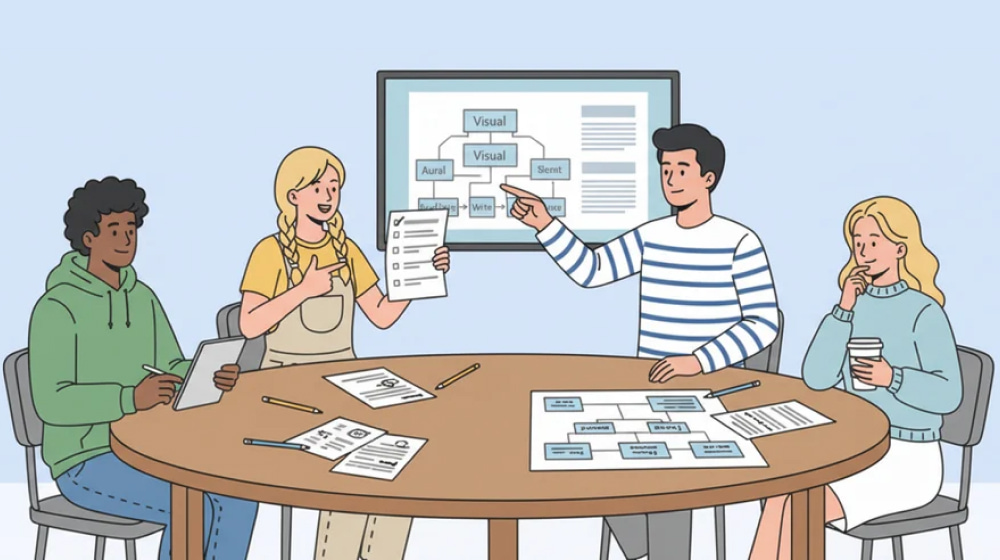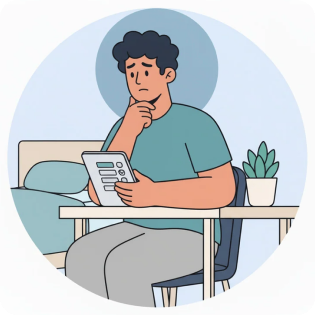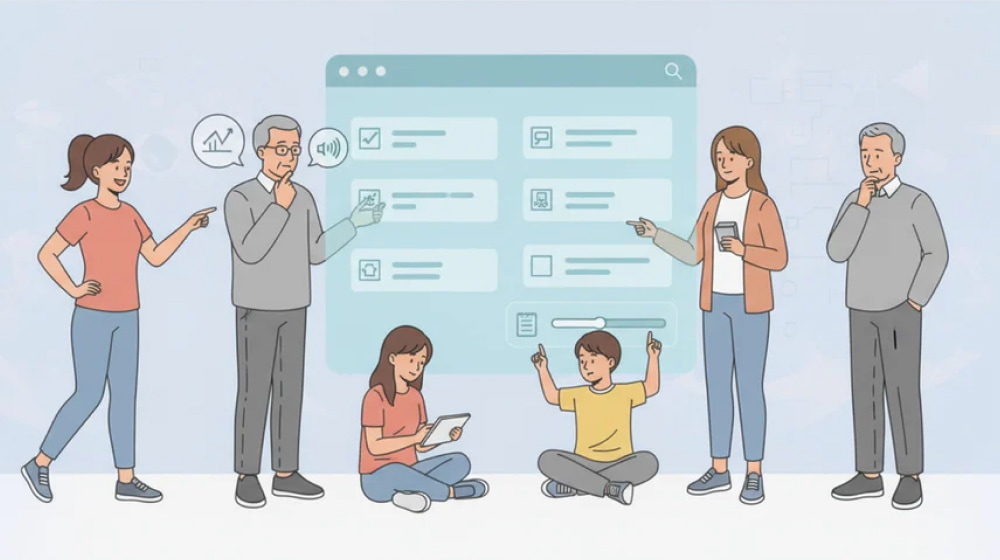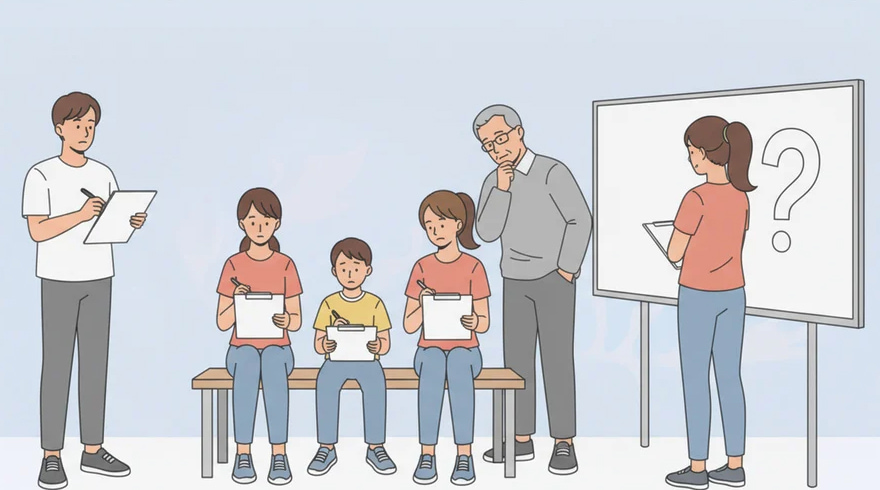
Gardner Intelligence Test: Identify Your Strengths
Across classrooms, workplaces, and personal development circles, people are recognizing that ability expresses itself through diverse channels. Rather than ranking everyone by a single score, modern approaches look at how people process information, solve problems, and create value in different contexts. In this broader view, the multiple intelligences test offers a structured snapshot of areas like linguistic, logical, spatial, musical, bodily-kinesthetic, interpersonal, intrapersonal, and naturalistic strengths. By capturing tendencies across these domains, the profile helps you notice patterns that traditional exams would miss.

Howard Gardner’s research inspired a practical movement that connects everyday tasks with cognitive preferences and real-world talents. While the framework is not a clinical diagnostic, the Gardner intelligence test has become a popular shorthand for tools that align with this theory and translate it into actionable insights. People often wonder how to use results beyond curiosity and self-description, and that is a fair question to ask. When you interpret outcomes from an intelligence type test, you can tailor study tactics, reorganize workflows, and choose projects that fit your mental sweet spots without forcing yourself into rigid categories.
- 1Recognize strengths that traditional quizzes overlook.
- 2Spot areas where targeted practice can accelerate progress.
- 3Build language to advocate for your ideal learning conditions.
Optimize Study Habits With Learning Styles Test
Practical benefits appear the moment you translate results into habits, study plans, and collaboration choices. The second payoff arrives when you align roles and resources with people’s dominant modes, which raises engagement and reduces friction across tasks and timelines. In many school programs, one well-structured learning style test can spark conversations that transform teaching strategies and classroom dynamics.

Organizations also gain by mapping strengths to responsibilities and mentoring approaches. When managers avoid one-size-fits-all training, productivity climbs and morale improves, particularly during onboarding and upskilling cycles. Educators report similar changes after running a carefully designed learning styles test that clarifies how students absorb, remember, and apply new material in varied settings.
| Framework | Primary focus | Best use cases | Typical duration |
| Multiple Intelligences | Distinct capability areas (e.g., linguistic, spatial, musical) | Holistic curriculum design, talent mapping, and individualized coaching | 10–20 minutes |
| VARK model | Preferred input modalities (visual, auditory, reading/writing, kinesthetic) | Study tactics, content formatting, accessibility choices | 5–10 minutes |
| Kolb’s experiential cycle | How people grasp and transform experience through learning phases | Leadership development, project debriefs, reflective practice | 10–15 minutes |
| LSI-style inventories | Learning preferences in professional and academic contexts | Team training, course design, coaching engagements | 10–15 minutes |
To turn insights into momentum, convert each strength into a repeatable tactic within your calendar and toolkit. Small changes compound, especially when you anchor them to real tasks you already perform every week. For educators and coaches who want richer diagnostics, a thoughtfully selected learning style inventory test can reveal patterns that make lesson planning and mentoring far more efficient.
Boost Study Skills
Not all tools answer the same question, so clarity about your purpose saves time and frustration. If you want to adjust how you take notes, read faster, or retain lectures more effectively, a modality-focused instrument shines. When you need quick guidance on sensory preferences for materials and study tactics, many learners start with a concise VARK test to tune how they interact with content across formats.

- 1Align study techniques with dominant modes of understanding.
- 2Redesign presentations and resources to fit diverse preferences.
- 3Use strengths to counterbalance weaker areas during complex projects
Test Determine Learning Style: Maximize Retention
Good preparation is simple: show up rested, minimize distractions, and respond to items based on typical behavior rather than aspirational ideals. Afterward, look for useful patterns without overgeneralizing or boxing yourself into fixed labels. Many readers like starting with a conversational what type of learner are you test to break the ice before moving into more specialized instruments.

Results become powerful when you translate them into experiments and measure outcomes in the real world. Track what actually improves, from comprehension and recall to creative output and time-on-task. If your aim is choosing tactics for study sessions, a concise test determine learning style can guide which techniques to try first and which to postpone for later trials. As you iterate, keep a log of what worked, what flopped, and what conditions seemed to matter most for progress. Over a few weeks, patterns emerge that no single snapshot could capture on its own. When reflection gets stalled, a practical how i learn test can provide prompts that restart experimentation with renewed focus and clarity.
If you’re exploring how you process experiences over time, reflective cycles and applied experimentation may be the better lens. Professionals who favor debriefs and action learning often glean sharper insights from a Kolb learning style test that frames preferences within stages like concrete experience and abstract conceptualization. In those cases, a focused visual, auditory, and kinesthetic test can highlight quick wins, such as shifting note-taking methods or rearranging study spaces to better match natural inclinations.

- 1Pick a framework that aligns with the decision you need to make.
- 2Favor brevity when you want fast, tactical adjustments.
- 3Choose depth when you need strategic, long-term development plans.
Frequently Asked Questions
- Is a strengths-based learning assessment scientifically legitimate?
These tools are not IQ exams or clinical diagnostics, yet they draw on decades of cognitive and educational research about preference, engagement, and transfer. Validity varies by instrument and purpose, so it helps to select reputable publishers and read their technical notes. The most reliable approach is to combine results with observation, goal-setting, and short experiments that verify whether recommended tactics actually move your metrics in the right direction.
- Where can I try a quick assessment without paying?
Plenty of reputable sites offer short questionnaires that provide immediate feedback and suggestions you can apply today. While quality ranges, the key is to look for clear explanations of what the output means and what it does not claim to measure. If you’re testing the waters before settling on a deeper option, a curated free multiple intelligence test can help you gather initial insights and decide whether to invest more time.
- Can these insights guide my college major or career path?
They can inform your choices, especially when you map strengths to the daily tasks of roles you are considering. Treat the outcomes as directional data rather than prescriptive rules, then validate with internships, shadowing, and portfolio projects. For broader self-understanding that integrates temperament and motivation, some people pair results with a learning styles personality test to cross-check patterns before making commitments.
- Do I need to pay for premium reports to get value?
Free versions often provide enough guidance to make meaningful changes to study habits, note-taking methods, and collaboration strategies. Paid reports usually add greater granularity, coaching prompts, and longitudinal tracking, which can be helpful for teams or academic programs. If budget is tight, starting with a credible multiple intelligences test free option and layering in your own reflection can still deliver substantial benefits.
- How should teachers or trainers use results ethically?
Use profiles to diversify instruction, not to pigeonhole students or restrict opportunities. Offer multiple pathways to grasp the same concept, rotate practice modalities, and let learners choose tactics that fit the day’s objectives. Document what works and revisit choices regularly, ensuring that flexibility remains the rule and that evidence of learning, not labels, drives your instructional decisions.
The Latest News: Online Learning Style Test
-
![The Definitive Guide to MI Assessments for Personalized Learning and Growth]() The Definitive Guide to MI Assessments for Personalized Learning and Growth Find Your Learning Style With Test Get Started Understanding the Framework Behind MI Assessments Howard Gardner’s perspective on human capability reframed how educators, coaches, and employers think about talent. Instead of assuming a single, uniform score captures a...
The Definitive Guide to MI Assessments for Personalized Learning and Growth Find Your Learning Style With Test Get Started Understanding the Framework Behind MI Assessments Howard Gardner’s perspective on human capability reframed how educators, coaches, and employers think about talent. Instead of assuming a single, uniform score captures a... - 11 November, 2025
-
![Free Multiple Intelligence Testing: A Complete Guide to Smarter Learning Decisions]() Free Multiple Intelligence Testing: A Complete Guide to Smarter Learning Decisions Find Your Learning Style With Test Get Started Understanding Multiple Intelligences in Modern Learning People learn in wonderfully different ways, and recognizing that diversity helps educators, students, and professionals make better choices. The multiple intelligences fr...
Free Multiple Intelligence Testing: A Complete Guide to Smarter Learning Decisions Find Your Learning Style With Test Get Started Understanding Multiple Intelligences in Modern Learning People learn in wonderfully different ways, and recognizing that diversity helps educators, students, and professionals make better choices. The multiple intelligences fr... - 10 November, 2025
-
![Kolb’s Experiential Learning: A Complete Guide to Styles, Tools, and Benefits]() Kolb’s Experiential Learning: A Complete Guide to Styles, Tools, and Benefits Find Your Learning Style With Test Get Started Foundations of Experiential Learning and Why Styles Matter Experiential learning explains how people transform experience into knowledge by cycling through doing, reflecting, conceptualizing, and experimenting. Rooted in cogni...
Kolb’s Experiential Learning: A Complete Guide to Styles, Tools, and Benefits Find Your Learning Style With Test Get Started Foundations of Experiential Learning and Why Styles Matter Experiential learning explains how people transform experience into knowledge by cycling through doing, reflecting, conceptualizing, and experimenting. Rooted in cogni... - 7 November, 2025
Please Note
This website (learningstyletesthub.com) is not an official representative, creator or developer of this application, or product. All the copyrighted materials belong to their respective owners. All the content on this website is used for educational and informative purposes only.



